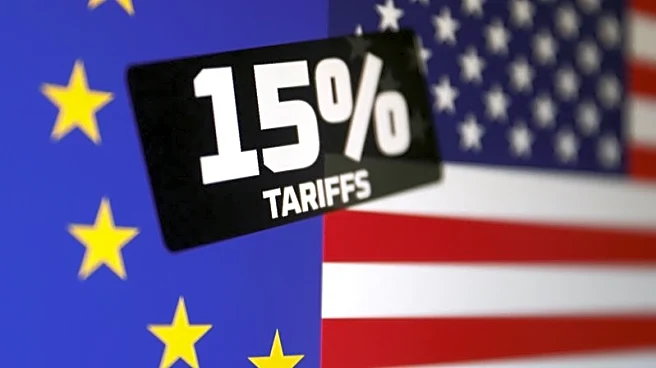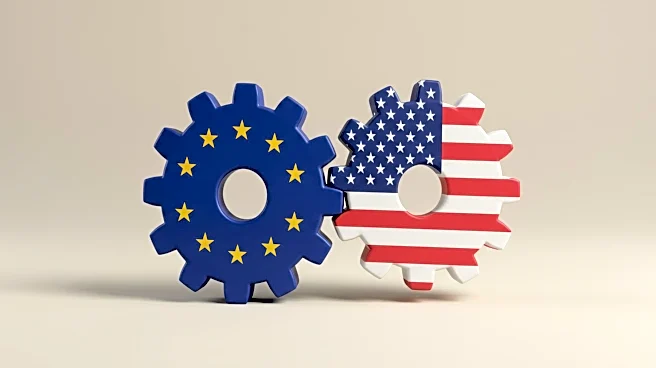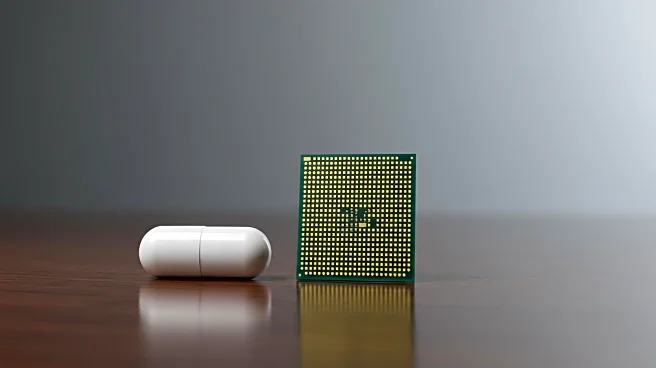What's Happening?
The United States and the European Union have reached a new tariff agreement affecting pharmaceuticals, lumber, and semiconductors. The agreement limits tariffs on these imports to 15%, a significant reduction from previously threatened rates as high as 250%. The deal also includes commitments from the E.U. to purchase energy and artificial intelligence technology from the U.S., with European companies pledging to invest $600 billion in strategic sectors by 2028. This development follows President Trump's earlier threats to impose steep tariffs on European goods, which have now been mitigated through diplomatic negotiations.
Why It's Important?
The tariff agreement is crucial for maintaining stable trade relations between the U.S. and the E.U., two of the world's largest economies. By reducing tariffs, the agreement helps prevent potential trade wars that could disrupt global markets and negatively impact industries reliant on international supply chains. The deal also opens opportunities for U.S. technology and energy sectors to expand their reach in European markets, potentially boosting economic growth and innovation. The investment commitments from European companies signal confidence in the U.S. economy and may lead to job creation and technological advancements.
What's Next?
The implementation of the tariff agreement will likely lead to increased collaboration between U.S. and E.U. industries, particularly in technology and energy sectors. Companies in these fields may begin strategizing to capitalize on new market opportunities. Additionally, the agreement may prompt other countries to seek similar trade deals with the U.S., aiming to secure favorable terms and avoid potential tariff hikes. Monitoring the impact of this agreement on trade volumes and economic indicators will be essential for assessing its long-term benefits.












